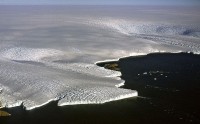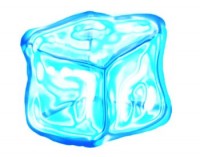By Alexandre Aguiar - MetSul Weather Center (Brazil) and ICECAP contributor
Tuesday, February 17th, mid afternoon in Latin America. News wires by the Spanish news agency EFE report a massive collapse of the Wilkins Ice Shelf in Antarctica. The news quickly appeared in the front pages of electronic editions of newspapers all over Latin America and Europe. “Iceberg larger than Hawaii has broken off in Antarctica” was the headline. The news said: “A 14,000 square km shelf of ice, almost twice the area of the Basque Country, has broken off the Wilkins Ice Shelf in the Antarctic. Scientists believe the ice shelf is crumbling as a result of global warming. The Spanish National Research Council (CSIC) has reported today that the resulting giant icebergs are now floating around in the Antarctic Ocean. A team of CSIC scientists have been in the area investigating the impact of the crumbling ice shelf on the ecosystem in the Belinghausen Sea, to the west of the Antarctic peninsula. Over the past two weeks, the scientists have seen the ice shelf on the edge of the Belinghausen Sea recede 550km and have noted that the water temperatures are extraordinarily warm in this area. Experts have warned that the breaking away of this massive ice shelf will ultimately have notable consequences on the sea level.

CSIC scientist, Jordi Dachs, reported that his team had found ‘a very high level of biological production’ in the areas where the fragments of ice have gone and that there is ‘abundant fauna, with the largest concentration of humpback whales and leopard seals’ they have seen up until now. ‘We have also found very low levels of CO2 in the sea water’ he continued, ‘suggesting that the increase in sunlight getting through and the elements released by the breaking ice fertilize the water’.”
My suspicion on the news was immediate. How do you detect a 14 thousand square kilometer ice breakdown from a boat. Why weren’t the satellites not showing such a huge event ? Well, later in the day the news had a different version. The Spanish CSIC clarified the collapse was not so large as previously informed. Suddenly, the headlines changed.
But it was not the end of the story. Wednesday, February 18th, mid afternoon in Latin America. News wires by the German news agency DPA report there was not a collapse observed in the Wilkins Ice Shelf. According to DPA, several German researchers assured today that pictures from the German satellite Terrasar and the European Envisat reveal no evidence of a break-up of the 14 thousand kilometers ice platform. The information was released by Professor Angelika Humbert from the University of Munster. Also, Professor Heinrich Miller from the Alfred-Wegener Institute in Bremerhaven dismissed a total collapse. Even the alarmist group Greenpeace said today there was no information on the alleged massive event reported by the Spanish in the South Pole. What was larger than Hawaii, in fact, became an embarrassing ice cube.

See pdf here.
Icecap Note: the peak of the Southern Hemisphere Melt season is still a month ahead. We should not be surprised to see chunks calving off the icesheet or even more cracking in the western Wilkins ice sheet. This is a normal process that has gone on throughout history. It is only now with satellite and funded coastal studies are we documenting these natural processes.




